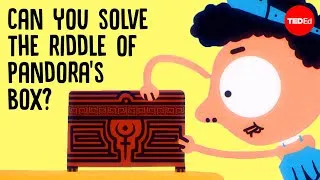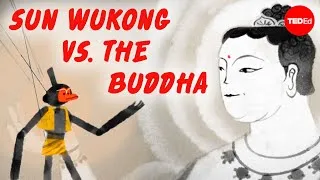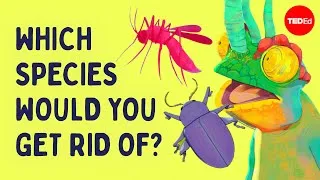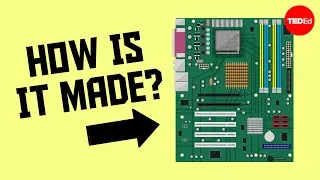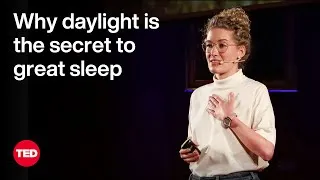The genes you don't get from your parents (but can't live without) - Devin Shuman
2,216,013 views ・ 2021-10-05
請雙擊下方英文字幕播放視頻。
譯者: Lilian Chiu
審譯者: Amanda Zhu
00:07
Inside our cells, each of us has
a second set of genes
0
7704
3500
我們每個人的細胞中,
都還有第二組基因,
00:11
completely separate from the 23 pairs
of chromosomes
1
11204
3375
不包括在我們從父母遺傳
得到的二十三對染色體之內。
00:14
we inherit from our parents.
2
14579
1667
00:16
And this isn’t just the case for humans—
3
16413
2333
且不只有人類是如此,
00:18
it’s true of every animal,
plant, and fungus,
4
18746
3417
所有的動物、植物、真菌類,
00:22
and nearly every multicellular
organism on Earth.
5
22163
3583
以及地球上幾乎
所有的多細胞有機體也一樣。
00:26
This second genome belongs
to our mitochondria,
6
26704
3375
這第二組基因位在粒線體內,
00:30
an organelle inside our cells.
7
30079
2250
粒線體是細胞中的一種胞器。
00:32
They’re not fully a part of us,
but they’re not separate either—
8
32329
3542
它們不完全是我們的一部分,
也不完全不是。
00:35
so why are they so different
from anything else in our bodies?
9
35871
3041
它們為什麼會如此不同於
我們體內的所有其他東西?
00:39
Approximately 1.5 billion years ago,
10
39246
3000
科學家認為,
00:42
scientists think a single-celled organism
engulfed the mitochondria’s ancestor,
11
42246
5875
大約十五億年前,一種單細胞有機體
吞噬了粒線體的祖先,
00:48
creating the predecessor
of all multicellular organisms.
12
48246
3833
創造出了所有多細胞有機體的前身。
00:52
Mitochondria play an essential role:
13
52412
2459
粒線體扮演了重要的角色:
00:54
they convert energy from the food we eat
and oxygen we breathe
14
54871
3750
我們吃的食物和吸的氧氣中的能量
00:58
into a form of energy our cells can use,
which is a molecule called ATP.
15
58621
5667
就要靠它們轉換成
細胞可以運用的能量形式,
即一種叫做三磷酸腺苷
——即 ATP——的分子。
01:04
Without this energy,
our cells start to die.
16
64663
3000
沒有這種能量,細胞就會開始死亡。
01:07
Humans have over 200 types of cells,
17
67829
2917
人類的細胞類型超過兩百種,
01:10
and all except mature red blood cells
have mitochondria.
18
70746
4542
除了成熟的紅血球細胞之外,
全部都有粒細體。
01:15
That’s because a red blood cell’s job
is to transport oxygen,
19
75288
4000
原因是紅血球細胞的
工作是在運送氧,
01:19
which mitochondria would use up before
it could reach its destination.
20
79288
4083
如果有粒細體在,
就會在抵達目的地前就把氧用光。
01:23
So all mitochondria use oxygen
and metabolites to create energy
21
83871
4917
所以,所有的粒線體
都會用氧和代謝產物來創造能量,
01:28
and have their own DNA,
22
88788
2333
且擁有它們自己的 DNA,
01:31
but mitochondrial DNA varies more
across species than other DNA.
23
91121
5333
但粒線體 DNA
在不同物種間的差異性
比其他 DNA 更高。
01:36
In mammals, mitochondria usually
have 37 genes.
24
96829
4125
哺乳類動物的粒線體
通常有三十七個基因。
01:40
In some plants, like cucumbers,
mitochondria have up to 65 genes,
25
100954
5334
至於一些植物,如黃瓜,
其粒線體有高達六十五個基因,
01:46
and some fungal mitochondria have only 1.
26
106288
3041
有些真菌類的粒線體則只有一個基因。
01:49
A few microbes that live
in oxygen-poor environments
27
109579
3459
少數幾種生活在稀氧環境中的微生物
01:53
seem to be on the way to losing
their mitochondria entirely,
28
113038
3791
幾乎快完全失去粒線體,
01:56
and one group, oxymonad monocercomonoides,
already has.
29
116996
4792
而有一類屬於類單鞭滴蟲屬的微生物,
已經沒有粒線體了。
02:02
This variety exists because mitochondria
are still evolving,
30
122288
4000
會有這樣的多樣性,
是因為粒線體仍然在演化,
02:06
both in tandem with the organisms
that contain them,
31
126288
2791
包括與它們所屬的有機體一起演化,
02:09
and separately, on their own timeline.
32
129079
2625
以及依它們自己的時間表單獨演化。
02:11
To understand how that’s possible,
33
131871
2000
要了解怎麼可能會如此,
02:13
it helps to take a closer look at what
the mitochondria inside us are doing,
34
133871
4458
可以先細究粒線體
在我們體內做些什麼,
02:18
starting from the moment we’re conceived.
35
138329
2584
從懷孕的那一刻開始談起。
02:21
In almost all species, mitochondrial DNA
is passed down from only one parent.
36
141288
5791
幾乎所有物種的粒線體 DNA
都是由父母其中之一所傳下來。
02:27
In humans and most animals,
that parent is the mother.
37
147121
3667
就人類和大部分動物而言,是母親。
02:31
Sperm contain approximately
50 to 75 mitochondria in the tail,
38
151079
4709
精子尾部含有大約
五十到七十五個粒線體,
02:35
to help them swim.
39
155788
1166
用以協助它們游泳。
02:37
These dissolve with the tail
after conception.
40
157079
3042
受孕之後,這些粒線體
就會和尾部一起溶解。
02:40
Meanwhile, an egg contains thousands
of mitochondria,
41
160413
3458
一個卵子則含有數千個粒線體,
02:43
each containing multiple copies
of the mitochondrial DNA.
42
163871
3458
每個都含有多個粒線體 DNA。
02:47
This translates to over 150,000 copies
of mitochondrial DNA
43
167496
5042
算起來就有超過十五萬個粒線體 DNA
02:52
that we inherit from our mothers,
44
172538
1875
都是來自我們的母親,
02:54
each of which is independent
and could vary slightly from the others.
45
174413
4000
每個粒線體都是獨立的,
且可能互相都有些微不同。
02:58
As a fertilized egg grows and divides,
46
178704
2542
隨著受精卵成長和分裂,
03:01
those thousands of mitochondria are
divvied up into the cells
47
181246
3583
那數千個粒線體會分裂並分配到
發展中胚胎的各細胞當中,
03:04
of the developing embryo.
48
184829
1584
03:06
By the time we have
differentiated tissues and organs,
49
186746
3167
當細胞已分化出組織和器官之後,
03:09
variations in the mitochondrial DNA are
scattered at random throughout our bodies.
50
189913
5791
粒線體 DNA 的差異
就會隨機散佈到我們全身各處。
03:15
To make matters even more complex,
51
195913
2166
更複雜的是,
03:18
mitochondria have a separate replication
process from our cells.
52
198079
3959
粒線體和細胞的複製過程是分開的。
03:22
So as our cells replicate by dividing,
mitochondria end up in new cells,
53
202163
5041
所以,當細胞透過分裂來複製時,
粒線體就會進入到新的細胞中,
03:27
and all the while they’re fusing
and dividing themselves,
54
207204
3750
而在此過程中,粒線體
也一直依循著自己的時間表
03:30
on their own timeline.
55
210954
1500
進行融合和分裂。
03:32
As mitochondria combine and separate,
56
212829
2584
隨著粒線體結合和分離,
03:35
they sequester faulty DNA or mitochondria
that aren’t working properly for removal.
57
215413
5583
它們會把有缺陷、無法妥當運作的
DNA 或粒線體隔離並除去。
03:41
All this means that the random selection
of your mother’s mitochondrial DNA
58
221204
4375
也就是說,你在出生時
從母親身上隨機選擇
03:45
you inherit at birth
59
225579
1625
而繼承的粒線體 DNA,
03:47
can change throughout your life
and throughout your body.
60
227204
3667
在你一生中、在你體內各處
都有可能會改變。
03:52
So mitochondria are dynamic and,
to a degree, independent,
61
232329
4125
所以粒線體會不斷變化,
某種程度上也是獨立的,
03:56
but they’re also shaped
by their environments: us.
62
236454
3209
但它們的環境,即我們,
也會改變它們。
03:59
We think that long ago,
63
239871
1292
我們認為,很久以前,
04:01
some of their genes were transferred
to their host’s genomes.
64
241163
3625
它們的一些基因
被轉移給其宿主的基因組。
04:04
So today, although mitochondria
have their own genome
65
244788
3250
所以現今雖然粒線體
有它們自己的基因組,
04:08
and replicate separately from the cells
that contain them,
66
248038
3000
且複製過程和它們
所屬的細胞是分開的,
04:11
they can't do this without
instruction from our DNA.
67
251038
3791
沒有我們 DNA 的指示,
它們也無法複製。
04:15
And though mitochondrial DNA
is inherited from one parent,
68
255038
3708
且雖然粒線體 DNA
來自父母其中之一,
04:18
the genes involved in building
and regulating the mitochondria
69
258746
3333
用來建造和管理粒線體的基因
04:22
come from both.
70
262079
1167
則是來自雙親。
04:23
Mitochondria continue to defy
tidy classification.
71
263746
3583
粒線體始終無法井然有序地分類。
04:27
Their story is still unfolding
inside of each of our cells,
72
267454
3875
存在於我們每個細胞裡的粒線體
仍有許多待解的謎團,
04:31
simultaneously separate
and inseparable from our own.
73
271329
3709
它們的故事和我們對人體的了解
是既分離又無法分離的。
04:35
Learning more about them can
both give us tools
74
275204
2292
進一步了解它們,一方面
能讓我們保護未來人類的健康,
04:37
to protect human health in the future,
and teach us more about our history.
75
277496
4708
二方面也能讓我們
更認識我們演化的歷史。
New videos
Original video on YouTube.com
關於本網站
本網站將向您介紹對學習英語有用的 YouTube 視頻。 您將看到來自世界各地的一流教師教授的英語課程。 雙擊每個視頻頁面上顯示的英文字幕,從那裡播放視頻。 字幕與視頻播放同步滾動。 如果您有任何意見或要求,請使用此聯繫表與我們聯繫。


